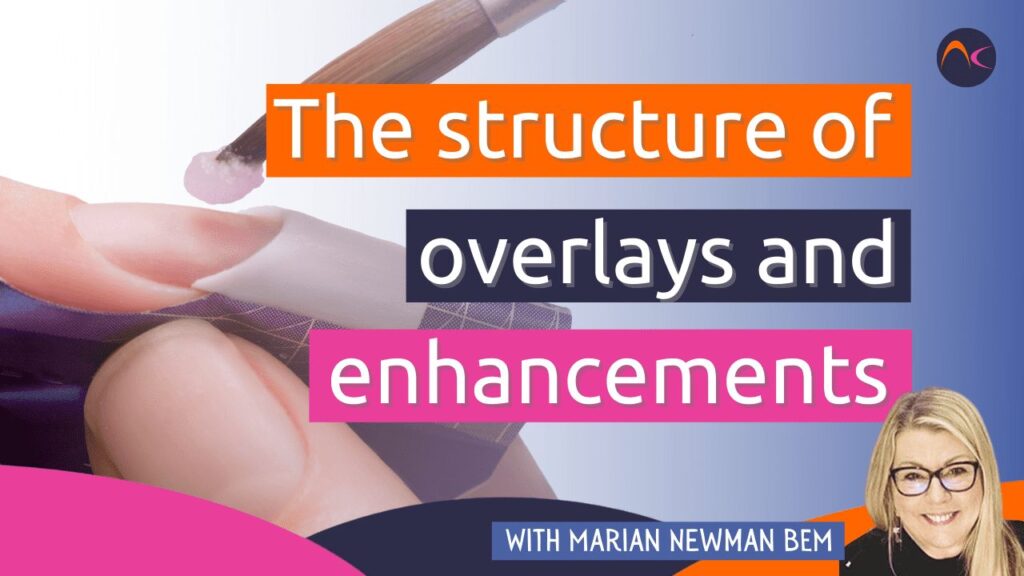Once upon a time, learning about the structure of overlays and enhancements was at the centre of beginner education. Nowadays, it doesn’t seem to feature as much and hardly ever for UV gel polish users. Plus, there are so many different shapes of enhancements that many favour it is often down to the appearance of the shape rather than understanding the strongest structure.
Time for a little revision.
An arch is very strong structure as any weight or forces put on it are mostly evenly spread all across it. The natural nail has two arches:
- From the base to the free edge: the upper arch
- From the one side wall to the other: the ‘C’ curve
Obviously, individuals have different configurations of these arches. I think all would agree that the most beautiful natural nails are slender and with gentle curves. These are also usually the strongest. Flatter shaped nails have more of a tendency to break.
The highest point of both these arches is usually in the centre of the nail and just behind the hyponychium. This is called the apex or stress area and is what gives the nail the best strength to withstand bending and breaking.
When creating a natural looking enhancement this is where the most product needs to be to provide the strongest structure. Careful shaping will disguise the thicker area as the overlay will be thinned down at the base and free edge and along the side walls, thus creating a gentle ‘upper arch’ and strong ‘C’ curve.
However, for longer and more extreme nail shapes the strong apex needs to be further back towards the base. This acts as a type of anchor that will withstand the pressures placed on the long free edge. But, even with the slightly shifted apex, the natural apex of the nail (as described above) still needs some help to avoid the nail from snapping.
With a carefully constructed enhancement this is achieved by creating a ‘back bone’ down the length of the nail. Again, this is disguised by accurate shaping. Some extreme shapes need a straighter ‘upper arch’ if any arch at all! But the strength still needs to be there. This is why an understanding of the arches, the apex, and accurate product placement is important for the different shapes.
There has been a popular shape that is a short ‘stiletto’ where the free edge is a point. For this design, the apex is usually placed close to the base of the nail. It doesn’t need to be there to support the length but, if it was placed over the ‘stress area’ it would create an ‘upper arch’ that, together with the point, would look more like a claw! This shape does, however, grow out quickly and leaves thick apex in an unattractive place.
On a more natural looking enhancement, the growth of the natural nail will have the apex over the free edge and unbalance the structure which can result in breakages. This is where the term ‘rebalance’ comes from when maintaining the enhancements. The original apex needs thinning down and replaced back to where it should be to balance the nail again.
‘Builder’ type UV gels that have become very popular in many UV gel polish systems are used to strengthen the nail by ‘building’ a stronger structure. But structuring the overlay is not often taught to those just using a UV gel polish. It should be noted here that the new National Occupational Standard for UV gel polish now includes ‘builder’ products and their correct application and structuring.
To conclude, a little revision on structuring an overlay or enhancement for those qualified in this service and perhaps some new information for those that have only qualified in UV gel polish.


